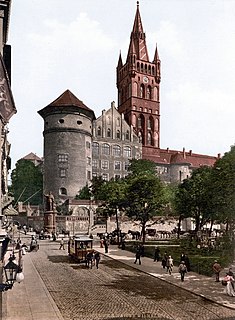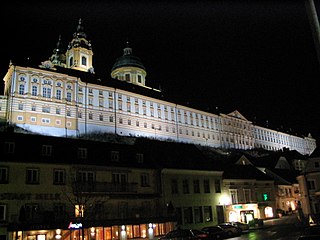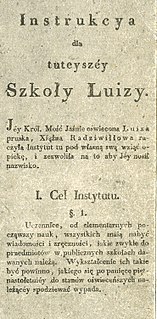
Contienen or Kontienen was a quarter of western Königsberg, Germany. Its territory is now part of the Moskovsky District of Kaliningrad, Russia.

The Königsberg City Archive was the municipal archive of Königsberg, Germany.

Severnaya Gora is part of the Leningradsky District in northern Kaliningrad, Russia. It was formerly known by its German language name Quednau as first a suburb of and then a quarter of Königsberg, Germany.
Chaikovskoye is part of the Moskovsky District of Kaliningrad, Russia. It was formerly known by its German language name Kalgen as first a suburb of and then a quarter of Königsberg, Germany.
Jerusalem was first a suburban estate and then a quarter of Königsberg, Germany, located southeast of the city center. Its territory is now part of the Moskovsky District of Kaliningrad, Russia.
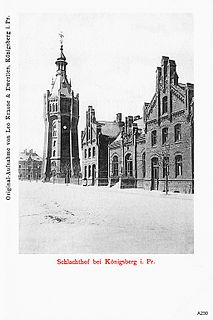
Rosenau was first a suburb of and then a quarter of Königsberg, Germany, located south of the city center. Its territory is now part of the Moskovsky District of Kaliningrad, Russia.
Mühlenhof was first a suburb of and then a quarter of Königsberg, Germany, located southeast of the city center. Its territory is now part of the Moskovsky District of Kaliningrad, Russia.
Dalneye is a residential area in Moskovsky District of the city of Kaliningrad, Russia. It was formerly known by its German language name Seligenfeld as first a suburb of and then a quarter of Königsberg, Germany, located southeast of the city center.
Chkalovsk is a residential area in Tsentralny District of Kaliningrad, Russia. It was formerly known by its German name Tannenwalde as first a suburban estate and then a quarter of northwestern Königsberg, Germany.
Lermontovo is a residential area in Tsentralny District of Kaliningrad, Russia. It was formerly known by its German language name Charlottenburg as first a suburban estate and then a quarter of northwestern Königsberg, Germany.
Hardershof was a suburban estate and then a quarter of northern Königsberg, Germany. Its territory is now part of the Tsentralny District of Kaliningrad, Russia.
Haffstrom was first a fishing village and then a quarter of southwestern Königsberg, Germany. Its territory is now part of the Moskovsky District of Kaliningrad, Russia.
Speichersdorf was first a suburb of and then a quarter of Königsberg, Germany, located south of the city center. Its territory is now part of the Moskovsky District of Kaliningrad, Russia.
Nevskoye is a residential area in Leningradsky District of Kaliningrad, Russia. It was formerly known by its German language names Kummerau and Cummerau as first a suburb of and then a quarter of Königsberg, Germany, located northeast of the city center.
Friedrichswalde was a suburban estate and then quarter of western Königsberg, Germany. Its territory is now part of the Tsentralny District of Kaliningrad, Russia.
Rzhevskoye is a residential area in Moskovsky District of the city of Kaliningrad, Russia. It was formerly known by its German language names Adlig Neuendorf or simply Neuendorf as first a suburb of and then a quarter of Königsberg, Germany, located east of the city center and south of the Pregel.

The Hufengymnasium or Hufen-Gymnasium was a gymnasium in the Hufen quarter of Königsberg, Germany.
The Bismarck-Oberlyzeum was a girls' gymnasium in Königsberg, Germany. It was named after statesman Otto von Bismarck.
The Goethe-Oberlyzeum was a girls' gymnasium in Königsberg, Germany, named in honor of the writer Johann Wolfgang von Goethe.
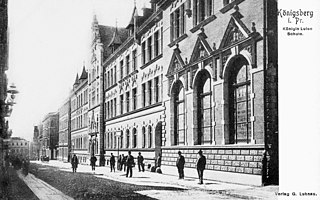
The Königin-Luise-Schule or Luisenschule was a girls' gymnasium in Königsberg, Germany.


